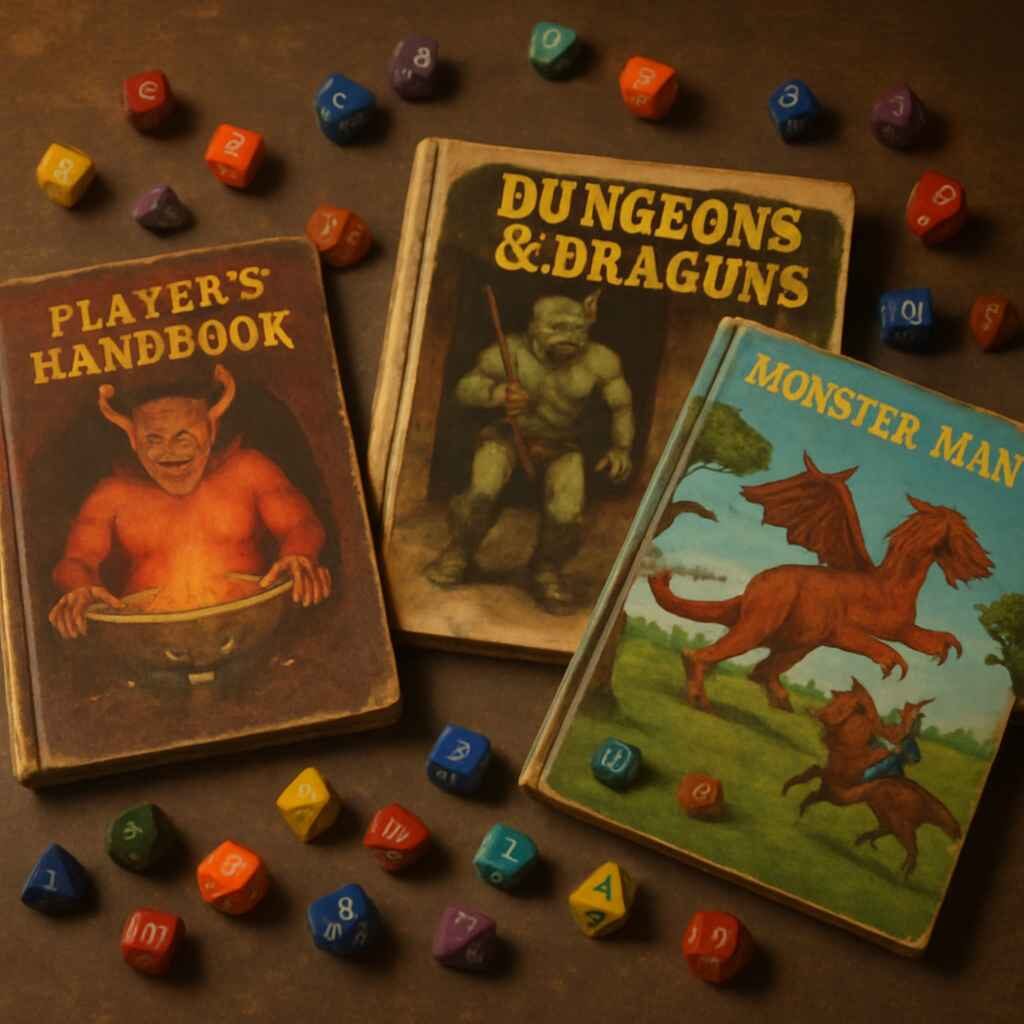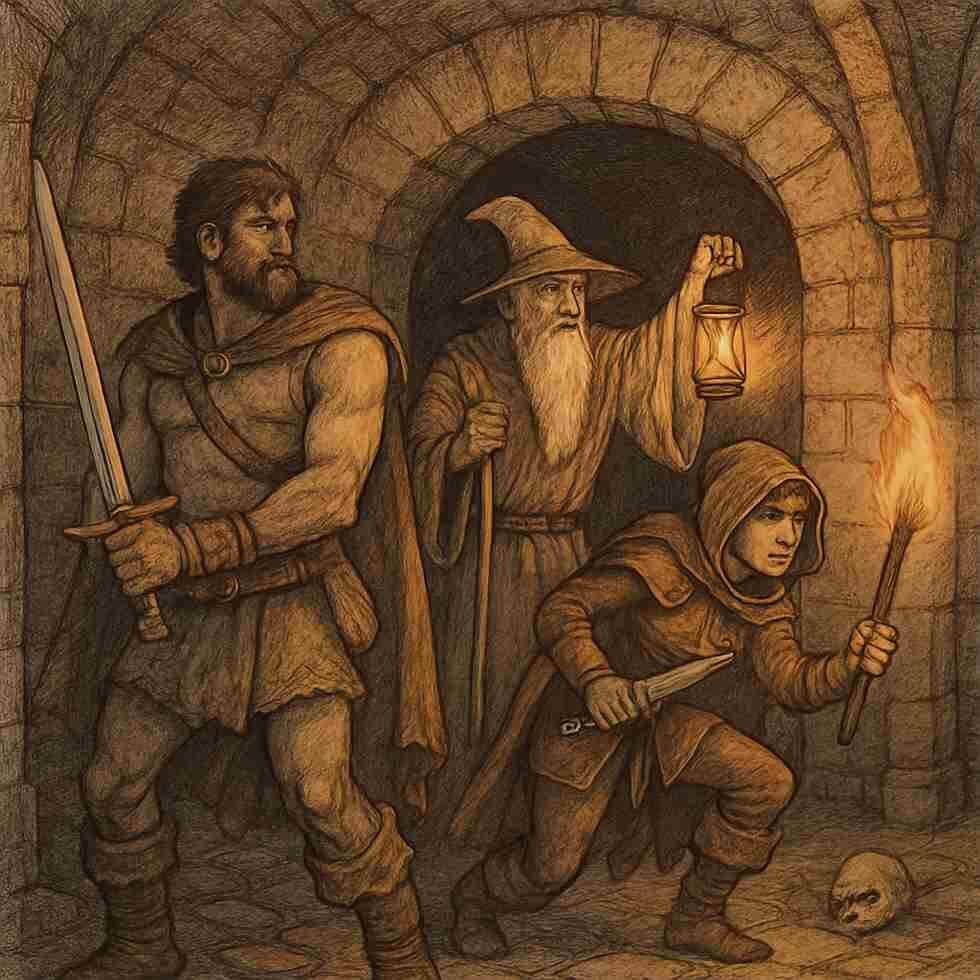Exploring the Evolution of Tabletop RPGs

Hello, fellow adventurers! Are you ready to embark on a journey through the fascinating history of tabletop role-playing games (RPGs)? Whether you’re a seasoned dungeon master or a curious newcomer, understanding the evolution of these games will give you a greater appreciation for the stories we tell around the table. So grab your dice, and let’s roll into the past! Look into the Best info about bet303 دانلود.
The Birth of Role-Playing Games

The story of RPGs begins in the early 1970s with the creation of “Dungeons & Dragons” (D&D). Developed by Gary Gygax and Dave Arneson, D&D took elements from miniature wargames and infused them with storytelling and character development. This groundbreaking game allowed players to assume the roles of characters in a fantasy world, embarking on quests and battling monsters.
The Influence of Wargaming
Before RPGs, wargaming was a popular hobby among strategy enthusiasts. These games often involved recreating historical battles with miniature figures. Gygax and Arneson were both avid wargamers and sought to add a narrative element to these strategic games, leading to the birth of D&D. Their innovative approach not only transformed wargaming but also laid the foundation for modern RPGs.
From Strategy to Story
The transition from pure strategy to storytelling was revolutionary. While traditional wargames focused heavily on tactics and outcomes, RPGs introduced character development and plot twists. This shift allowed players to engage in a more immersive experience, where their decisions shaped the narrative. The personal connection to characters transformed gaming sessions into epic sagas.
Cultural Impact of Dungeons & Dragons
D&D didn’t just change gaming; it altered the cultural landscape. The game introduced a new form of social interaction, where imagination and cooperation were key. It inspired countless novels, films, and art, contributing to the broader fantasy genre. The influence of D&D extended beyond the gaming table, sparking creativity across various media.
Challenges and Controversies
The emergence of RPGs was not without its challenges. In the 1980s, D&D faced criticism and controversy, with some groups associating it with negative influences. Despite these challenges, the game persevered, proving the resilience and passion of its community. The controversies only highlighted the deep emotional connection players had with the game.
The Golden Age of Tabletop RPGs
As the 1980s dawned, tabletop RPGs surged in popularity. D&D became a cultural phenomenon, inspiring a wave of new games and expansions. This era is often referred to as the “Golden Age” of RPGs, as it saw the introduction of many beloved games that are still played today.
Expanding Worlds and Genres
During this time, the RPG landscape broadened significantly. Games like “Call of Cthulhu” introduced horror elements, while “Shadowrun” blended fantasy and cyberpunk. These diverse themes allowed players to explore different genres and storytelling styles, expanding the appeal of RPGs to a wider audience.
Horror Takes the Stage
The introduction of horror elements in RPGs brought a new dimension to gameplay. “Call of Cthulhu,” inspired by H.P. Lovecraft’s works, challenged players to confront the unknown. The emphasis on atmosphere and psychological tension provided a stark contrast to the heroic fantasy of D&D, offering players a different kind of thrill.
The Fusion of Genres
Games like “Shadowrun” and “Paranoia” blurred genre lines, combining elements of science fiction, fantasy, and satire. This fusion expanded the creative possibilities for game design and storytelling. Players could explore dystopian futures or comedic takes on espionage, each game offering a unique narrative experience.
Role of Fantasy Literature
Fantasy literature played a crucial role in shaping RPGs during the Golden Age. Authors like J.R.R. Tolkien and Robert E. Howard inspired game settings and character archetypes. These literary influences enriched the world-building aspects of RPGs, providing rich tapestries for players to explore and interact with.
The Rise of Game Systems
With the growing popularity of RPGs, game systems became more sophisticated. Developers began creating detailed rulesets and mechanics to enhance gameplay. This period saw the introduction of iconic systems like the d20 System, which became a standard for many games.
Evolution of Gameplay Mechanics
As RPGs evolved, so did their mechanics. Early games relied on simple dice rolls and charts, but designers soon introduced complex systems that offered more depth. These innovations allowed for greater player agency and strategic planning, enhancing the overall gaming experience.
Standardization and Accessibility
The development of standardized systems like the d20 System made RPGs more accessible. Players could learn a single set of rules and apply them across multiple games, reducing the learning curve. This standardization also encouraged creativity, as designers could focus more on storytelling and less on inventing mechanics.
Impact on Player Communities
The rise of sophisticated game systems fostered the growth of player communities. Rulebooks and expansions became shared resources, sparking discussions and debates. Players connected over their interpretations and adaptations, creating a rich tapestry of shared experiences and collaborative storytelling.
The Digital Revolution
The late 20th and early 21st centuries brought significant changes to the RPG landscape with the advent of digital technology. The internet and computer software opened new possibilities for RPG enthusiasts.
Virtual Tabletops and Online Communities
Virtual tabletops, such as Roll20 and Fantasy Grounds, allowed players to connect online, breaking geographical barriers. These platforms provided tools for creating maps, managing character sheets, and rolling dice, making it easier than ever to play RPGs with friends around the world.
Breaking Geographic Barriers
Virtual tabletops revolutionized the way RPGs were played by eliminating the need for physical proximity. Players from different continents could now embark on adventures together. This accessibility broadened the player base and introduced diverse perspectives into the gaming community.
Tools for Enhanced Gameplay
Digital platforms offered a suite of tools that enhanced gameplay. From intricate map designs to automated dice rolls, these features streamlined game management. Players and game masters could focus more on storytelling and less on logistics, allowing for richer, more immersive experiences.
The Rise of Streaming and Podcasts
With online platforms came the rise of RPG streaming and podcasts. Shows like “Critical Role” and “The Adventure Zone” showcased the storytelling potential of RPGs to a global audience. These broadcasts inspired countless viewers to try RPGs, contributing to a resurgence in their popularity.
Mobile and Video Game Adaptations
The digital age also saw the adaptation of tabletop RPGs into video games. Titles like “Baldur’s Gate” and “The Witcher” brought RPG mechanics and storytelling to the digital realm, offering immersive single-player experiences that captured the spirit of tabletop gaming.
Bridging Digital and Tabletop
Video game adaptations bridged the gap between digital entertainment and traditional RPGs. These games retained the core elements of tabletop RPGs, such as character customization and narrative choices, while utilizing the capabilities of modern technology to enhance visual storytelling.
Expanding RPG Narratives
Digital adaptations expanded RPG narratives in new directions. Games like “The Witcher” introduced complex storylines with branching paths, where player choices had significant consequences. This level of storytelling complexity enriched the genre, attracting gamers who appreciated deep narrative experiences.
Influence on Game Design
The success of video game adaptations influenced tabletop game design. Game designers began incorporating elements like visual aids and interactive components into their tabletop offerings. This cross-pollination of ideas led to innovative new games that blurred the lines between physical and digital experiences.
The Modern Era of Tabletop RPGs
Today, tabletop RPGs continue to thrive, with a diverse range of games and communities. The modern era has seen a resurgence in indie RPGs, as creators experiment with new mechanics, settings, and storytelling techniques.
The Indie RPG Renaissance
The indie RPG scene has exploded in recent years, with innovative games like “Blades in the Dark” and “Powered by the Apocalypse” gaining popularity. These games often focus on narrative-driven experiences, emphasizing storytelling over complex mechanics.
Emphasis on Narrative and Emotion
Indie RPGs prioritize narrative and emotional engagement over strict mechanics. Games like “Blades in the Dark” offer dynamic storytelling frameworks that adapt to player choices. This approach fosters creativity and allows players to explore complex emotions and themes in a collaborative environment.
Community-Driven Creations
The indie RPG movement is characterized by its community-driven nature. Platforms like Kickstarter have empowered creators to bring unique visions to life. These grassroots efforts often result in innovative games that challenge traditional RPG conventions and introduce fresh perspectives.
The Role of Minimalist Design
Many indie RPGs embrace minimalist design, focusing on simplicity and elegance. This approach allows players to engage with the narrative without being bogged down by complex rules. Minimalist design also encourages improvisation, making each gaming session unique and memorable.
Inclusivity and Diversity in RPGs
Modern RPGs are also more inclusive and diverse, reflecting a broader range of voices and experiences. Creators are actively working to make RPGs accessible to everyone, resulting in games that explore different cultures, identities, and perspectives.
Representation in Gaming
The push for inclusivity has led to a greater representation of diverse characters and cultures in RPGs. Games now feature protagonists from various backgrounds, allowing players to explore stories that resonate with their own experiences. This representation fosters empathy and understanding within the gaming community.
Accessibility and Adaptability
Game designers are prioritizing accessibility, creating RPGs that can be adapted for players with different needs. This includes designing games with adjustable complexity levels and providing materials in various formats. These efforts ensure that RPGs can be enjoyed by everyone, regardless of their abilities.
The Impact of Diverse Voices
The inclusion of diverse voices in RPG creation has enriched the genre. Creators from underrepresented communities bring unique perspectives and stories to the table, challenging stereotypes and expanding the narrative possibilities of RPGs. This diversity enhances the richness and authenticity of the gaming experience.
Tips for Aspiring RPG Creators
If you’re inspired to create your own RPG, here are a few tips to get you started:
- Start with a Strong Concept: Think about the world you want to create and the stories you want to tell. Your concept will guide the development of your game.
- Design Engaging Mechanics: Consider how players will interact with your game. Will it be rules-heavy or more narrative-focused? Test your mechanics with playtesters to ensure a fun experience.
- Focus on Storytelling: RPGs are all about stories. Develop compelling characters, settings, and plots that will captivate your players.
- Embrace Feedback: Listen to feedback from playtesters and the community. Use it to refine your game and make it the best it can be.
- Stay True to Your Vision: While feedback is important, remember to stay true to your creative vision. Your unique perspective is what will set your game apart.
Crafting Your Unique World
When starting with a strong concept, consider the elements that make your world unique. What are the cultural, historical, and environmental factors that shape it? Crafting a detailed setting will provide a solid foundation for your storytelling, helping players immerse themselves in your game.
Mechanics that Enhance Experience
Engaging mechanics should complement your game’s theme and style. Experiment with different systems to find what best suits your concept. Whether it’s a combat system or a social interaction framework, the mechanics should enhance the experience without overshadowing the narrative.
Building Compelling Narratives
Storytelling in RPGs involves weaving intricate narratives that resonate with players. Develop characters with depth and motivations, and create plots that challenge and engage. Consider incorporating player choices into the narrative, allowing them to influence the story’s direction and outcomes.
Iterative Design Process
Embrace feedback as a crucial part of the design process. Conduct playtests to observe how players interact with your game. Use their insights to refine your mechanics and narrative. An iterative approach will help you create a polished and enjoyable RPG that resonates with its audience.
The Balance of Vision and Flexibility
While staying true to your vision is important, remain open to new ideas and influences. Flexibility can lead to unexpected innovations that enhance your game. Balance your core concept with adaptability, ensuring your RPG evolves in response to feedback and creative exploration.
Conclusion
From humble beginnings to a global phenomenon, tabletop RPGs have evolved dramatically over the decades. These games have fostered creativity, collaboration, and camaraderie among players, providing countless hours of entertainment and storytelling. Whether you’re a seasoned player or a newcomer, there’s never been a better time to dive into the world of RPGs. So, gather your party, roll the dice, and embark on your next great adventure!
Happy gaming!




